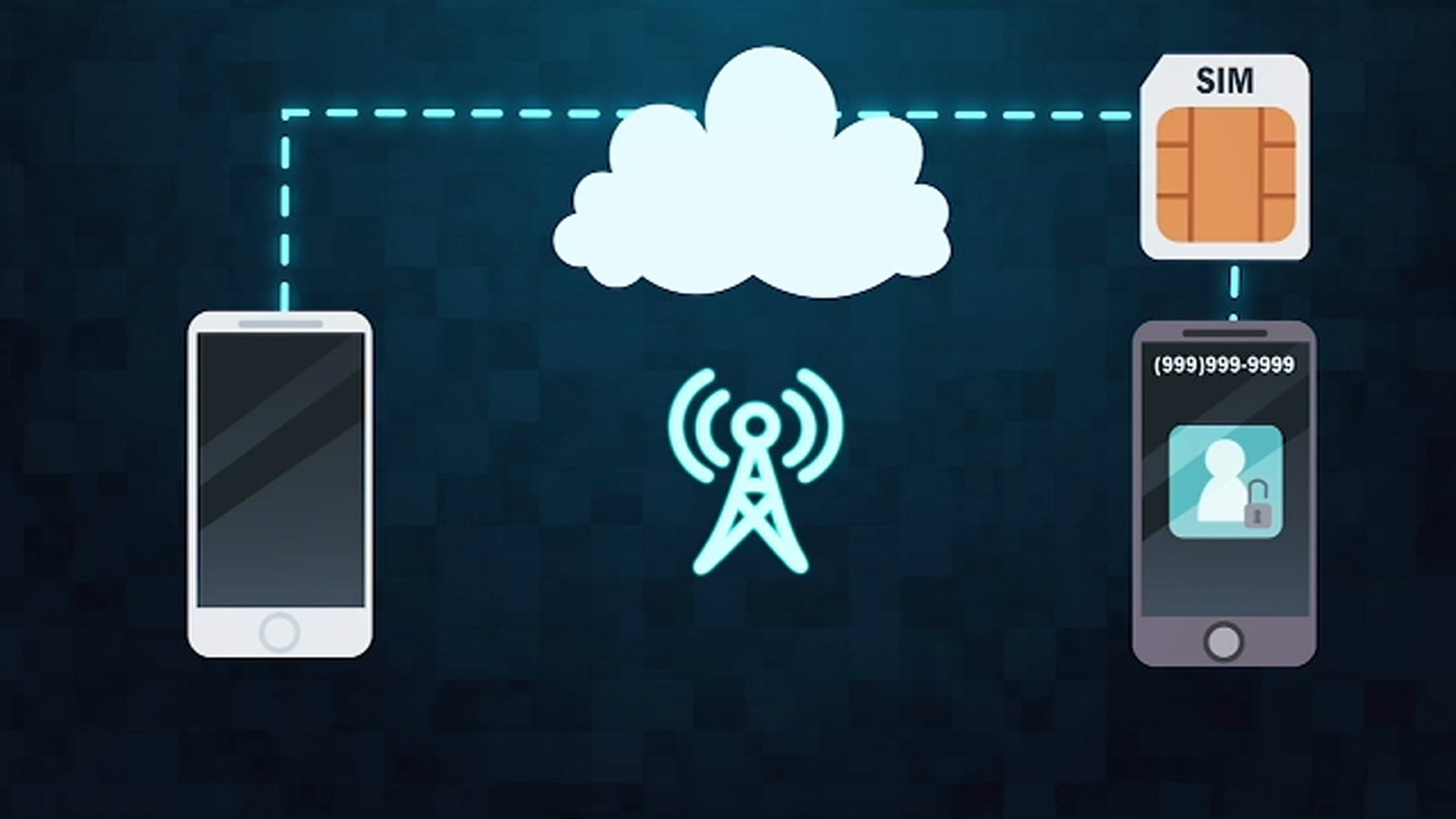Cyber attackers can access your private information by sim-swapping your mobile phones. A SIM-swap fraud is a type of scam that occurs when identity thieves exploit a flaw in 2FA (two-factor authentication) and verification that also involves sending an SMS (text message) or calling your cell phone number. Accessing your savings account necessitates the use of text-based 2FA, which entails entering the login details before you receive an access code. On the other hand, Hackers modify the SIM card linked to your mobile phone by contacting your mobile operator, pretending to be you, stating to have misplaced or damaged the SIM card, and requesting a new activated SIM card in complete control of the conman.
Here, social networking sites research, spyware, the deep web, and, most importantly, phishing email data prove helpful. Once they’re in, nothing stops them from exploiting it all on your mobile phone, compromising your mobile security.
Definition of SIM Swap
It is the process of hacking/hijacking someone’s sim card by calling their mobile phone carriers pretending to be the victim who lost or damaged their sim card to gain access to their bank accounts, personal information, and confidential files or to defame or humiliate them in public.
How Does SIM Swap Work
SIM cards are used in GSM phones to store user data. GSM devices without a SIM card are not permitted to connect to any mobile phone network. Therefore, once a SIM card is removed from your smartphone, you cannot reach out to anyone unless you’re connected to the WIFI. You do not receive any messages or calls from anyone. Alternatively, all messages are forwarded to the hackers. Whereas WiFi will continue to function, your sim data and signals will be discontinued.
SIM swap scam is classified into two types. The first method is done by social engineering and is aimed at both the victim and the mobile carrier. The second method employs an insider, typically a malicious mobile carrier worker, but it is less popular.
The hacker can reach the victim’s mobile carrier, imitating them and trying to claim that the SIM card linked with the victim’s number has been lost or damaged. They ask customer support to simulate their new SIM card or simply assist them in swapping to their new device. When the SIM card swap fraud is executed, the hacker obtains all calls and texts for the victim’s mobile, along with any OTP (one-time passwords), and the mobile loses network access.
How to Protect Yourself from SIM Swap?
You must be wary of spam emails, strengthen your user account security with a robust code or password, and make it your habit to update your password every two months. You can use Google Authenticator, which provides 2FA but is tied to your mobile device instead of your phone number. Pay very close attention to emails sent by your mobile carrier or bank, as well as extra checks once SIM cards are reissued like port out. Here are a few tips to stay secured from SIM swap attacks:
- Limit sharing your personal details on social media. Only share what is necessary to avoid becoming a prey of social engineering attack.
- Secure your accounts with strong and unique passwords.
- Answer challenging security questions, so it is hard to crack them.
- Avoid using phone numbers as 2FA.
- Set a separate PIN or security code for your correspondence through your mobile carrier to add an extra layer of security.
- If your mobile operator provides it, you can choose to receive additional notifications whenever a sim card is reissued on your
number - Try to remove your phone access entirely from extra sensitive accounts to keep them secure.
- Change your passwords and passcodes frequently.
- Never click on spam (seemingly dangerous) links.
- Avoid sharing your passwords with your friends or better halves.
- Use mobile applications that support two-factor biometric verification via Face or Touch ID.
- Keep an eye on your location. If you are in California and your phone is in Texas, someone may have hacked your account.
- Some argue that swapping SIM cards has become easier because of 2FA. However, that is not entirely true. In reality, a SIM Swap scam is a rationale for strong authentication, which includes using a cryptographic key for physical authentication.
- Physical authentication methods outpertorm standard 2FA as they need you to enter your password and use a physIcal token
- such as a smart card or FIDO key to authenticate yourself.
- Subscribe to Efani, who provides guaranteed SIM swap protection for only $99/month.
How to Know You Are SIM Swapped?
If you observe any of the following red flags, you must immediately contact your mobile phone service
Being unable to access your device’s account online. If you discover yourself unexpectedly locked Out of your mobile
service’s account online, notify your cell provider right away-a SIM swap could be the reason.
No mobile signals, even with great reception. That means your mobile loses signals, or you cannot receive texts and calls
even though the password is clearly present it is time to contact your mobile service provider.
Alerts from phone services for unrecognized actions. Be on the lookout for signs of malicious transactions. You may
receive alerts when anything out of the normal occurs with your bank statement or social media account.
What to Do If You Find You Are SiM Swapped?
Do not panic but act fast. As Soon as you sense or learn that you are SIM swapped or your mobile security is
compromised. Reach out to your bank account to hold any transaction, your mobile carrier to block any SIM
requested on your account without your knowledge, and lock social media accounts. The quicker you take action,
the better use best dark web scanner software. The next step is to block the intruder’s SIM and get a new SIM card for yourself.



